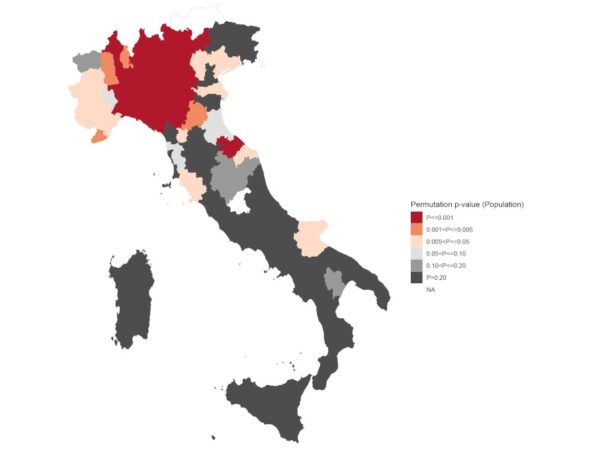Classification of weekly provincial overall age and sex-specific mortality patterns during the CoVID epidemics in Italy
Publication date: 21/07/2020 – E&P Code: repo.epiprev.it/1931
Authors: Nataša Kejžar1, Lara Lusa1,2
Abstract: OBJECTIVES: to provide a time-varying classification of the Italian provinces based on the weekly age and sex-specific relative risks (RR) for overall mortality, obtained comparing the number of deaths from 13 weeks from the beginning of the CoVID epidemics, with the average number of deaths from the same period in 2015-19.
DESIGN: population overall mortality data provided by the Italian National Statistical Office (ISTAT).
SETTING AND PARTICIPANTS: Italian residents 60 years or older from 7357/7904 Italian municipalities. For the included municipalities the number of deaths from any cause from January 1st till May 30th was available for each day of the 2015-2020 period. Data were stratified by sex, 4 age categories (60-69, 70-79, 80-89, 90+), week and province.
MAIN OUTCOME MEASURES: province and sex-specific weekly RR curves (age category vs RR), obtained for 13 weeks between February 26th and May 30th; excess mortality; time-varying/weekly classification of provinces.
RESULTS: our results provide a weekly classification of the Italian provinces based on their RR curves in 5 groups, 2 of which had high and very high excess mortality during the epidemics. Most of the provinces that appeared at least once in the highest-risk group are neighboring provinces in the northern regions of Lombardia, Emilia Romagna, Piemonte, and Marche (in central Italy), where most of the CoVID cases and deaths were identified. A subanalysis of the provinces with high-incidence of the virus identified three groups, different in the magnitude of the overall RR, but also in the shape of their RR curves, which varied markedly also between men and women and most importantly in the highest-risk group.
CONCLUSIONS: our study gives timely reanalysis of the Istat data at weekly level and provides a classification of the geographical and temporal characteristics of the excess mortality in the Italian provinces during the CoVID epidemics. Our results facilitate the presentation of the spatio-temporal mortality patterns of the epidemics and provide evidence of high heterogeneity in the group of provinces that were defined as high-risk groups by others, based on their geographical position or on the observed spread of the virus.




